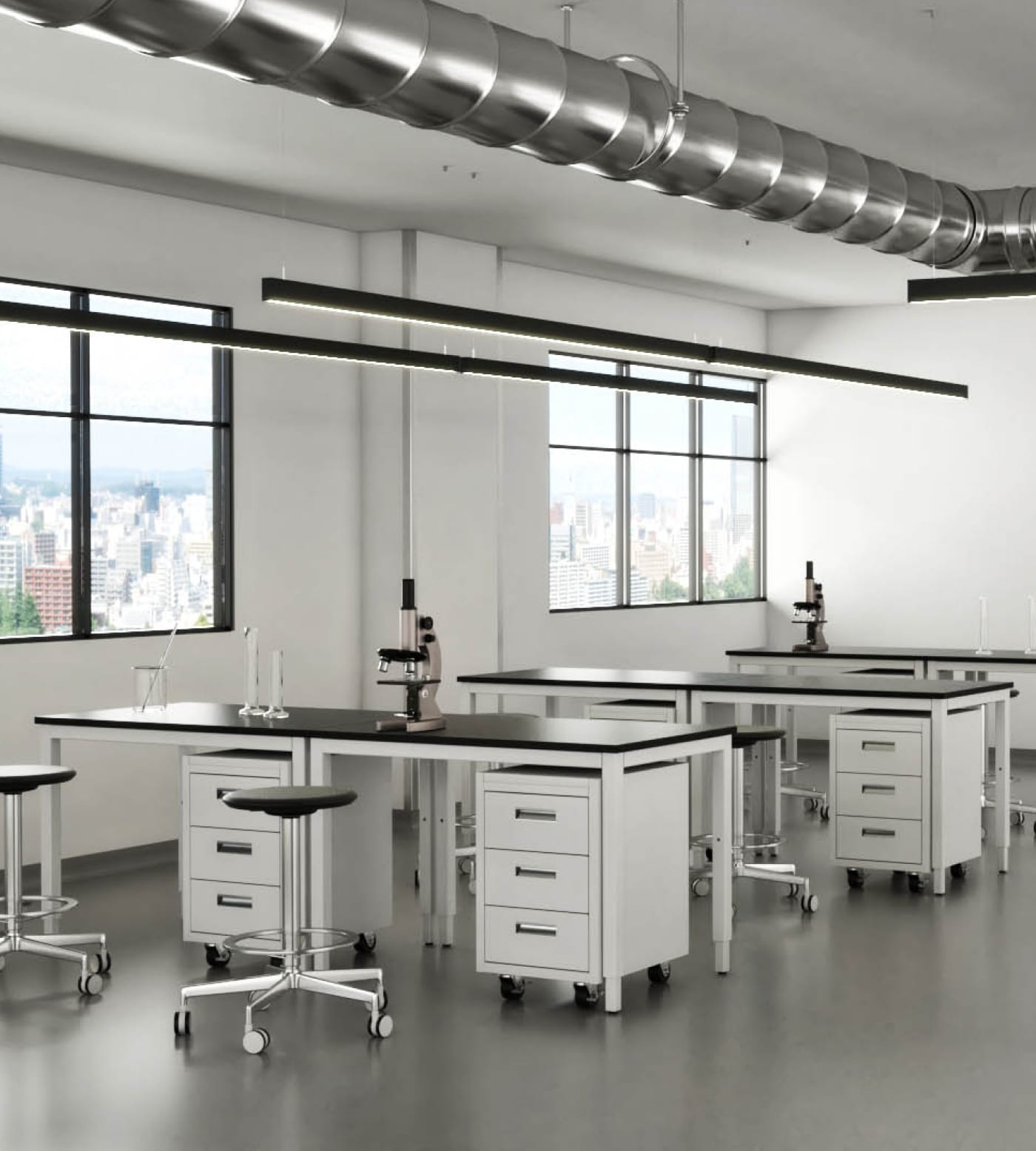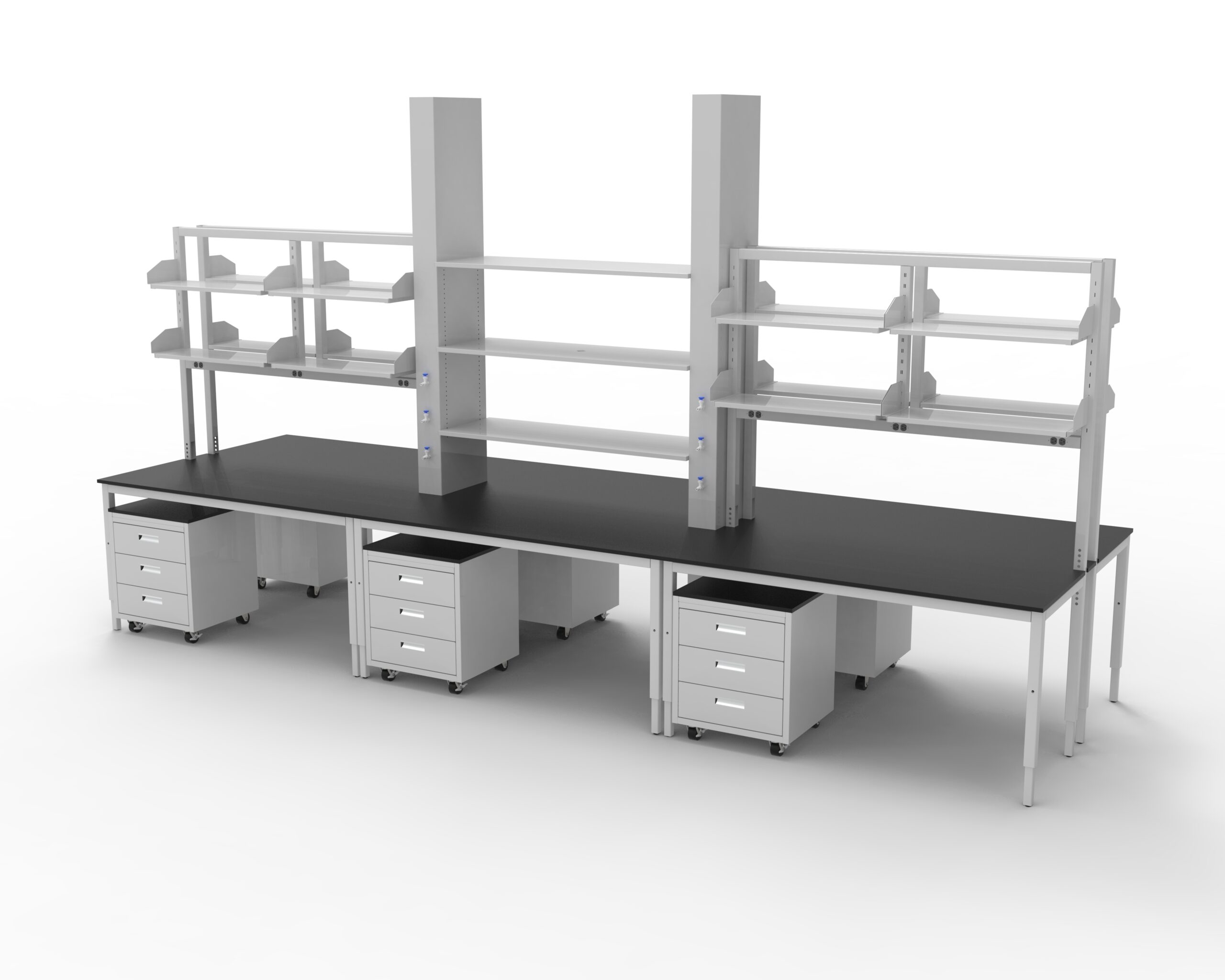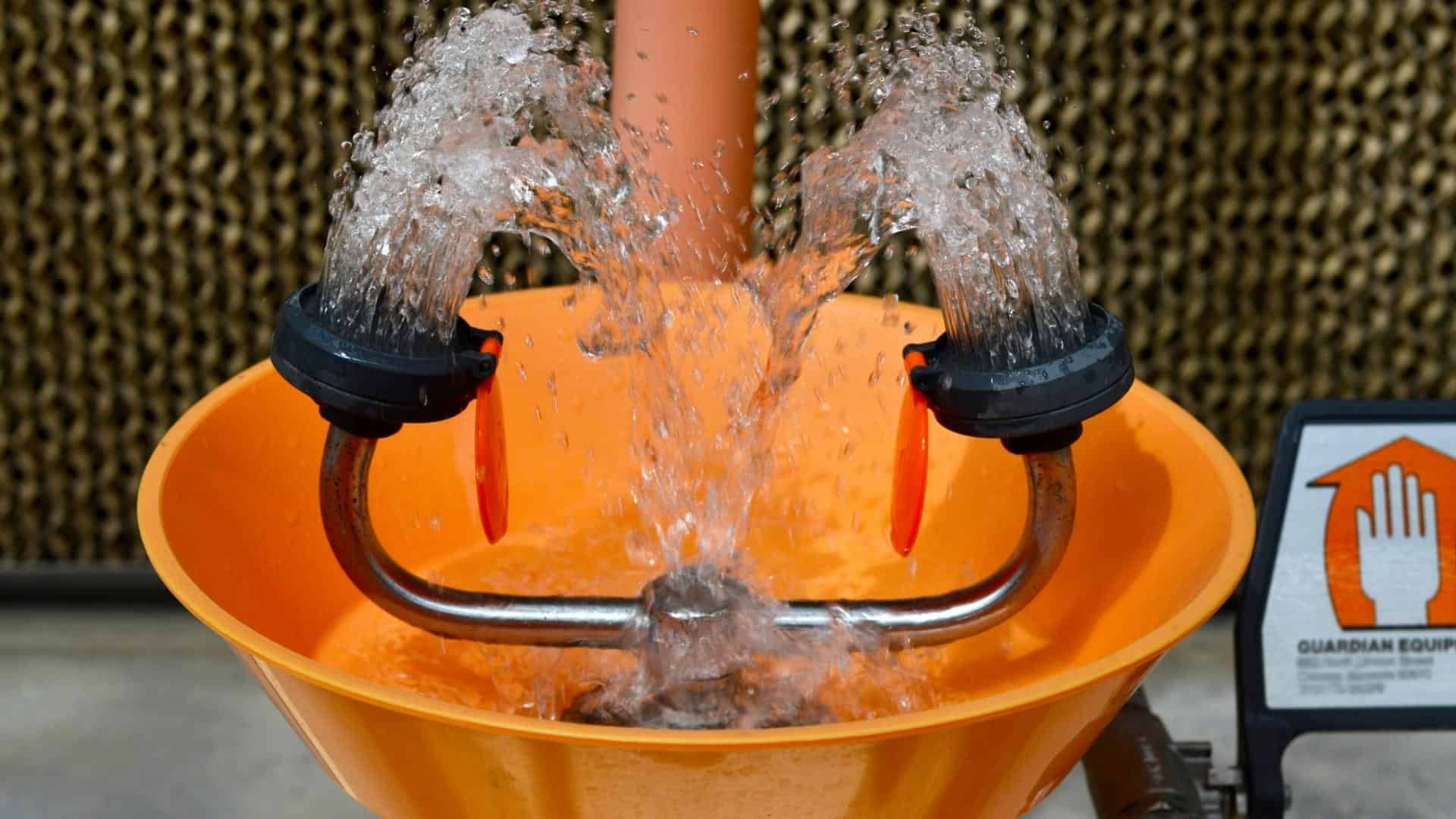Types of Chemical Fume Hoods
In laboratories and manufacturing environments, a fume hood is designed to protect the product being produced, the personnel working in the environment, or both. Essentially it is a large chamber that uses a blower motor to suck in contaminated air and either expel it from the building or filter and recirculate it.
Whether air is recirculated or not depends on the application, local regulations, and the efficiency of filtration systems. Fume hoods come in many different sizes depending on the application, with many laboratories and manufacturers having several fume hoods throughout their facilities.
A common term that measures airflow is face velocity, which essentially measures the pull of air through the fume hood and into the duct work. This pull must be maintained at a safe and consistent velocity in a specified range depending on how dangerous the contaminant being filtered is, and how toxic it may be.
How this velocity is controlled helps define the difference between two primary types of fume hoods, Constant Air Velocity (CAV), and Variable Air Velocity (VAV).
Methods of Controlling Airflow
The essential difference between these two types of fume hood systems are in the type of devices used to increase or reduce air volume passing through the duct system. The VAV uses a Venturi valve or dampener, while the CAV relies primarily on sash position. The constant velocity hood is always pulling air from the facility at the same rate. Therefore, changing the airflow is governed by the position of the sash (window) on the fume hood and various other bypass openings depending on make and model. This is much like putting your thumb over a garden hose: the smaller you make the opening, the greater the pressure.
Typically a sash has a maximum opening and various stages in between. There are a variety of ways that sensors are used with the building management system (BMS) to regulate the sash opening and the face velocity.
Instead of relying merely on the sash opening and bypasses to regulate face velocity, a VAV system uses an additional valve or dampener. As you can surmise, this is not only more efficient, but it puts less pressure on the overall HVAC system of the building. In this case if the sash opens further, the valves also alter their positions to maintain the same airflow volume.
These two methods of controlling airflow and face velocity impact the manufacturing facility in various ways, from costs to the environment itself.
Initial Cost of Installation
Because it is more complex, a VAV system is typically more expensive to install initially, usually around 25% greater cost, depending on the application. The good news is that even if a CAV system is put in place, it can often later be retrofitted to a VAV system.
The other consideration is the HVAC system. The CAV system will typically put more strain on that system through the continuous pull of conditioned air being drawn from the facility, so the two go hand-in-hand. While the CAV system itself may be less expensive initially, there may be collateral costs involved that negate those savings down the road.
Long-Term Energy Savings
Simply due to their design, a VAV system uses less energy in the long run than a CAV system. Depending on the size of the laboratory or manufacturing facility, and the application, these savings can result in the system paying for itself in a few short years.
They do this by incorporating a closed loop control system, continuously measuring and adjusting the amount of air being exhausted to maintain the ideal face velocity. The addition of these controls also reduces exhaust volume and increases both safety and efficiency.
Preciseness of Environmental Control
There is another distinct advantage to a VAV system, and that is precise environmental control. Typically, with a CAV, as the sash is lowered, the temperature in the space around it increases, and just the opposite as it is moved to an open position. This means that with a VAV system, since the air velocity is automatically being adjusted, the temperature changes are less significant around the hood making for a more comfortable working environment for the user. In settings where precise temperature control is critical or even just desirable, a VAV system offers superior performance without taxing the HVAC system to make up the difference.
Compliance with Green Energy Initiatives
Increasingly customers and companies are vested in doing what is best for the environment, and that means green energy initiatives are a critical part of doing business. Laboratories tend to use significantly more energy than office buildings of the same size, so reducing that energy use and carbon footprint is critical.
A VAV system can go a long way to helping you do just that. Investors and asset managers like BlackRock are choosing to invest in companies who are taking climate change head on and voting against investing in companies who do not. This shift in mentality is critical for lab managers, architects and builders looking to embrace green initiatives and improve the profitability of their facilities.
Pros and Cons
The primary advantage of a CAV system is its straightforward design and ease of installation. This relates to initial cost savings. However, the primary disadvantage is long term energy costs and the impact that energy use has on the environment.
A VAV system offers increased safety and control and fewer long-term costs. These long-term savings help offset the increased initial cost.
Have questions about the system that is right for you and your application? Connect with us at IQ Labs for more information.




